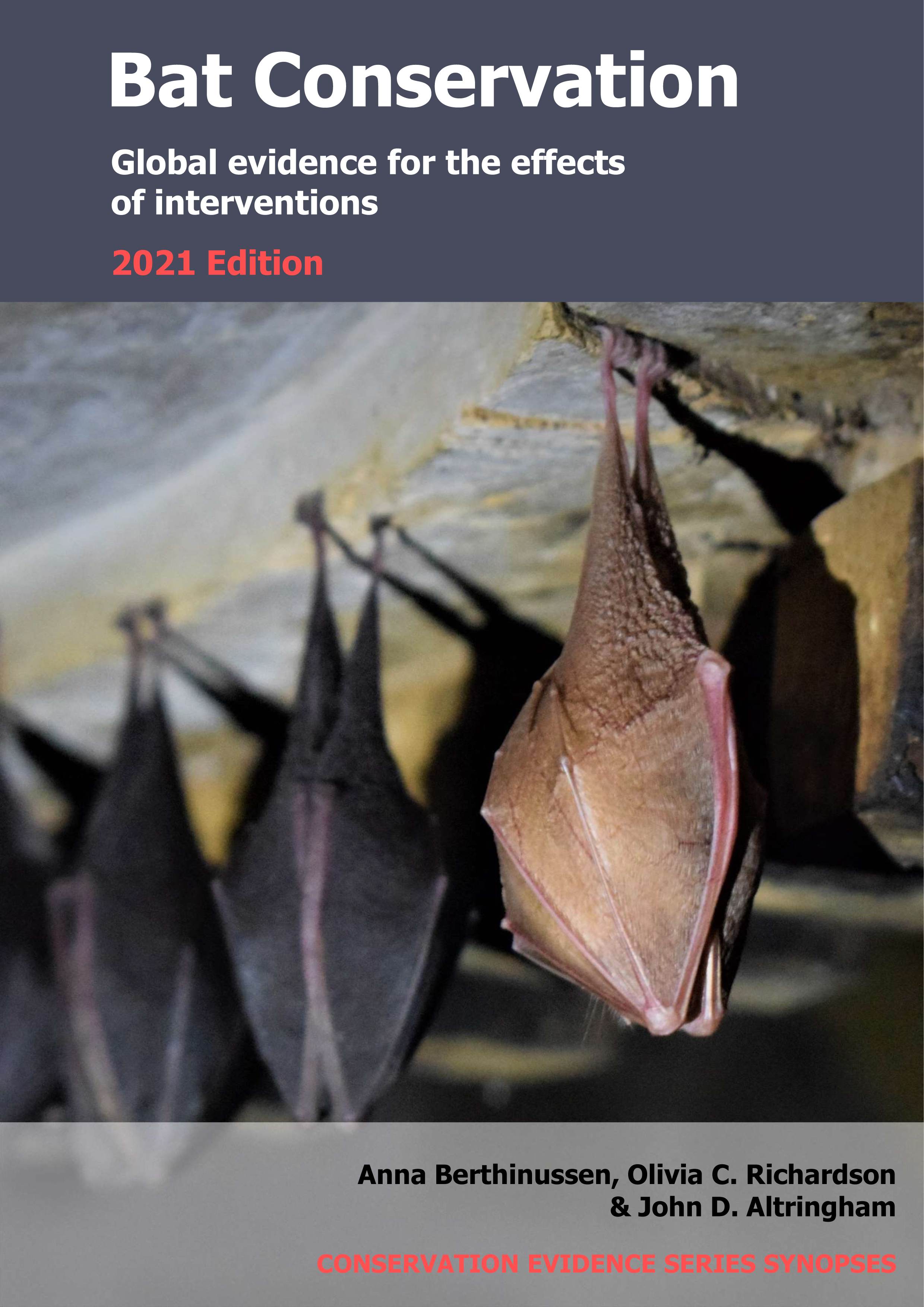Minimize noise levels within caves
-
Overall effectiveness category Unknown effectiveness (limited evidence)
-
Number of studies: 1
View assessment score
Hide assessment score
How is the evidence assessed?
-
Effectiveness
40% -
Certainty
21% -
Harms
0%
Study locations
Supporting evidence from individual studies
A controlled study in 1997–1998 in one cave in Arizona, USA (Mann et al 2002) found that experimental cave tours with groups that did not talk resulted in fewer take-offs and landings by a roosting cave myotis Myotis velifer colony than when groups did talk, but talking did not have a significant effect on overall colony activity. Bats had fewer take-offs and landings when groups did not talk (take-offs: average 13; landings: average 12) than when all members of the group talked (take-offs: average 16; landings: average 14). Overall activity of the colony (all bat movements) was similar when groups did not talk (average 59% of colony active) or when all members of the group talked (62%). A colony of 1,000 cave myotis bats roosted in a large cluster within one room of the cave. Experimental tours were carried out through the room with five replicates of each of 24 treatment combinations. Treatments included voice intensity (no people talking, all members of group talking), light intensity and colour (no light, low intensity white light, full red light, full white light), and size of tour group (0, 1–3 or 6–8 people). A total of 120 experimental cave tours were carried out between April and September in 1997 and 1998. Bat behaviour was observed with a night-vision video camera and infrared lights.
Study and other actions tested
Where has this evidence come from?
List of journals searched by synopsis
All the journals searched for all synopses
This Action forms part of the Action Synopsis:
Bat Conservation
Bat Conservation - Published 2021
Update 2020





)_2023.JPG)














